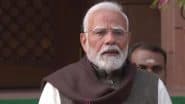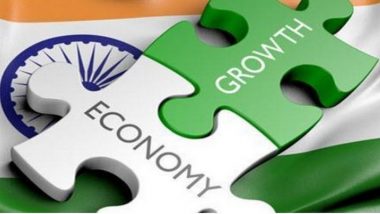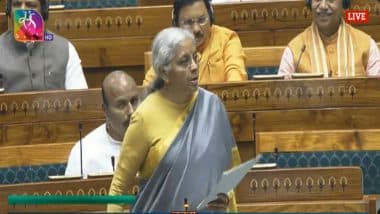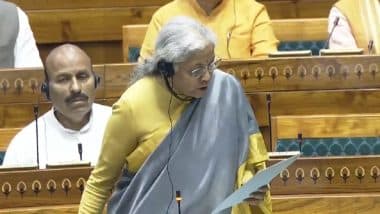New Delhi, February 1: As one of the fastest growing economies, the global spotlight has shifted onto India to restore order in an increasing disorderly global financial system. Among the challenges, India would work towards creating an international economic order that is just, fair, inclusive and equitable for all. The focus of Union Government will be on generating broad-based and inclusive economic growth.
The fiscal policy would be grounded in reforms, resilience and readiness. This approach should not only invigorate the growth momentum, but also create necessary buffers to enable the Government to effectively respond to emergent global and domestic challenges. This as stated in the Medium Term Fiscal Policy Cum Fiscal Policy Strategy Statement presented by the Union Minister for Finance and Corporate Affairs Nirmala Sitharaman in the Parliament today. Income Tax Slabs 2025: Nil Tax for Individuals Earning up to INR 12 Lakh Annually Under New Regime, Says FM Nirmala Sitharaman.
Macro-Economic Framework Statement 2024-25 cites the first advance estimates published by the National Statistics Office, projecting India's real and nominal GDP growth rates at 6.4 per cent and 9.7 per cent, respectively, in FY 2024-25. The Budget for FY 2025-26, the nominal GDP is projected to grow by 10.1 per cent over the first Advance Estimates of FY 2024-25.
Inflationary pressures have moderated in FY 2024-25, with average retail inflation easing to 4.9 per cent (April-December) compared to 5.4 per cent in 2023-24, notes the Macro-Economic Framework Statement. This decline was driven by benign core (nonfood, non-fuel) inflation trends. The overall retail inflation remained within inflation-band of 4±2 per cent in FY 2024-25 (April-December). Supply-side measures from the Government have helped contain food inflation. The statement forecasts that Inflation is expected to decline in FY 2025-26. The RBI has projected inflation at 4.6 per cent and 4.0 per cent in Q1 and Q2 of FY 2025-26, respectively. Even though the outlook for commodity prices remains benign, geopolitical triggers may aggravate price pressures.
The Macro-Economic Framework Statement 2024-25 highlights that the nimble fiscal policy strategy adopted by the Union Government in the post CoVID-19 pandemic years, which has generated desired fiscal policy results while providing for the country's development needs. In RE 2024-25, the Government has revised its Fiscal Deficit target to 4.8 per cent of GDP. In line with the commitment made in the Budget for FY 2021-22, the country is well on track to attain a fiscal deficit to GDP ratio below 4.5 per cent in FY 2025-26. Tax Booster for Indian Middle Class: FM Nirmala Sitharaman Announces No Income Tax Payable on Income up to INR 12 Lakh and INR 12.75 Lakh for Salaried Taxpayers (Watch Video).
The Central Government Debt to GDP ratio is estimated to decline to 56.1 in FY 2025-26 from 57.1 in FY 2024-25. As per the path for fiscal consolidation – FY 2026-27 to FY 2030-31, sans any major macro-economic disruptive exogenous shock(s), and while keeping in mind potential growth trends and emergent development needs, the Government would endeavour to keep fiscal deficit in each year (from FY 2026-27 till FY 2030-31) such that the Central Government debt is on declining path to attain a debt to GDP level of about 50±1 per cent by 31st March 2031. Along with these, Revenue Deficit is also on declining trend and is expected to reduce from 4.8 per cent of GDP in FY 2024-25 to 4.4 per cent of GDP in FY 2025-26.
(The above story first appeared on LatestLY on Feb 01, 2025 01:19 PM IST. For more news and updates on politics, world, sports, entertainment and lifestyle, log on to our website latestly.com).













 Quickly
Quickly




















